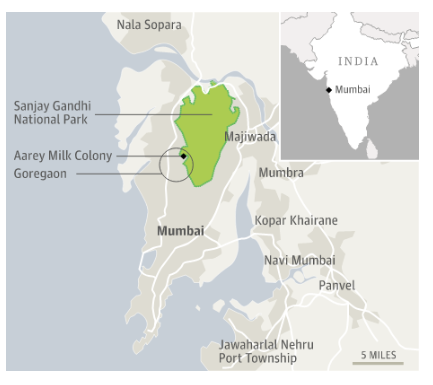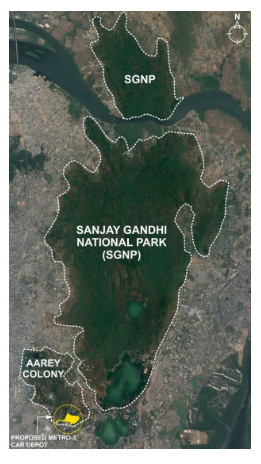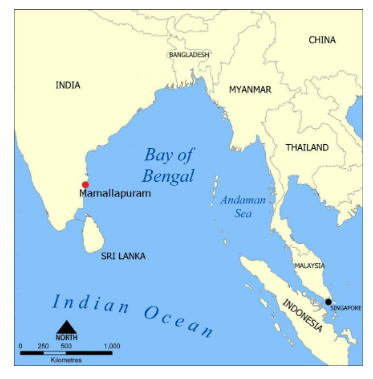IASbaba's Daily Current Affairs Analysis
IAS UPSC Prelims and Mains Exam – 10th October 2019
Archives
(PRELIMS + MAINS FOCUS)
Slowdown effects more pronounced in India: IMF
Part of: GS Prelims and GS Mains III – Economy
In News
- The new IMF chief Kristalina Georgieva warned that the global economy is witnessing “synchronised slowdown” which will result in slower growth for 90% of the world this year.
- Widespread deceleration meant that growth this year would fall to its lowest rate since the beginning of the decade.
- Despite this overall deceleration, close to 40 emerging market and developing economies are forecast to have real GDP growth rates above 5% — including 19 in sub-Saharan Africa. Also, in the U.S. and Germany, unemployment is at historic lows.
Do You Know?
- World Economic Outlook by IMF to be released by mid-October would show downward revisions for 2019 and 2020.
- The RBI has recently lowered India’s GDP growth estimate for the year to 6.1% from the earlier 6.9% due to the ongoing period of economic slowdown.
Data localisation
Part of: GS Prelims and Mains GS-II – International Relations
In News
- India’s data localisation plans will hang on balance if it agrees to e-commerce provisions of Regional Comprehensive Economic Partnership(RCEP)
- Thiswould mean India won’t be allowed to impose data localisation rules on companies looking to do business in India.
- In its April 2018 notification, the RBI had said that “all system providers shall ensure that the entire data relating to payment systems operated by them are stored in a system only in India.”
- This data is to include the full end-to-end transaction details, information collected, carried, or processed as part of the message or payment instruction.
- India is negotiating in the RCEP talks, being held in Bangkok, to change the relevant provision so as to enable space for national rules and regulations over data.
GEMINI system to warn fishermen of danger
Part of: GS Prelims and GS-III- Disaster Management
In News
- To avoid communication blackouts during disasters like cyclones, slew of government departments, research agencies and private companies have developed GEMINI, a portable receiver linked to ISRO satellites, that is “fail-proof” and warn fishermen of danger.
- GEMINI works on GAGAN and is an India-made global positioning system. It relies on the positioning system of ISRO’s GSAT satellites.
- The Indian National Centre for Ocean Information Services (INCOIS), a Hyderabad institute collaborated with Accord, a private company, to develop a box-shaped receiver that has an antenna and in-built battery that can last three to four days.
- When GEMINI is connected to an app, it also lets fishermen know the probability of fish catch in the surrounding seas.
- At ₹9,000 a device, it’s relatively expensive but attempts are on to subsidise it by as much as 90%.
About GAGAN
- GPS Aided GEO Augmented Navigation (GAGAN), developed by ISRO and Airports Authority of India(AAI) is a regional Satellite Based Augmentation System (SBAS).
- The GAGAN’s goal is to provide a navigation system to assist aircraft in accurate landing over the Indian airspace and in the adjoining area and applicable to safety-to-life civil operations.
- GAGAN is inter-operable with other international SBAS systems.
- GAGAN covers the area from Africa to Australia and has expansion capability for seamless navigation services across the region.
- GAGAN makes airline operations more efficient and effective, increase air safety, and fuel efficiency.
2019 NOBEL PRIZE FOR CHEMISTRY
Part of: GS Prelims and GS-III- Science & Technology
In News
- Three scientists on were awarded the Nobel Prize in Chemistry for their contributions to the development of lithium-ion batteries
- These batteries have reshaped energy storage and transformed cars, mobile phones and many other devices in an increasingly portable and electronic world.
- The prize went to John B Goodenough of the University of Texas; M Stanley Whittingham of the State University of New York at Binghamton; and Akira Yoshino of Meijo University in Japan.
- At 97, Mr. Goodenough is the oldest Nobel winner.
- The Nobel committee said the lithium-ion battery has its roots in the oil crisis in the 1970s, when Whittingham was working to develop methods aimed at leading to fossil fuel-free energy technologies.
Do You Know
- Prize founder Alfred Nobel, a Swedish industrialist who invented dynamite, decided the physics, chemistry, medicine and literature prizes should be awarded in Stockholm, and the peace prize in Oslo.
- The prizes come with a 9-million kronor ($918,000) cash award, a gold medal and a diploma that are conferred on December 10 — the anniversary of Nobel’s death in 1896 — in Stockholm and in Oslo, Norway.
India slips 10 places in global competitiveness index
Part of: GS Prelims and GS-III- Economy
In News
- India has moved down 10 places to rank 68th on an annual global competitiveness index, largely due to improvements witnessed by several other economies
- While Singapore has replaced the U.S. as the world’s most competitive economy.
- Global Competitiveness Index compiled by Geneva-based World Economic Forum (WEF),
- Some of the findings of WEF study are:
- India is ranked also high at 15th place in terms of corporate governance, while it is ranked second globally for shareholder governance.
- In terms of market size, India is ranked third, while it has got the same rank for renewable energy regulation.
- The healthy life expectancy, where India has been ranked 109th out of total the 141 countries surveyed for the index, is one of the shortest outside Africa and significantly below the South Asian average.
- With a ratio of female workers to male workers of 0.26, India has been ranked very low at 128th place.
- India is also ranked low at 118th in terms of meritocracy and incentivisation and at 107th place for skills.
- In overall ranking, India is followed by some of its neighbours including Sri Lanka at 84th place, Bangladesh at 105th, Nepal at 108th and Pakistan at 110th place.
Saturn has the most numbers moons in our Solar System
Part of: GS Prelims and GS-I- Geography
In News
- The International Astronomical Union’s Minor Planet Center confirmed 20 new moons orbiting Saturn, making it the planet with the most moons in our Solar System, at 82.
- Until their confirmation, the planet with the most moons was Jupiter, at 79
- Our Solar System’s planets together have 205 confirmed moons now.Saturn and Jupiter, with 161 between them, account for nearly 80% of these.
- Another 20% are orbiting Uranus (27) and Neptune (14). Of the remaining three moons, one is Earth’s own while the other two are with Mars.
- Mercury is so close to the Sun and its gravity that it wouldn’t be able to hold on to its own moon. Any moon would most likely crash into Mercury or maybe go into orbit around the Sun and eventually get pulled into it.
- It is not yet clear, however, why Venus does not have a moon.
(MAINS FOCUS)
CONSERVATION
TOPIC: General Studies 3:
- Conservation, environmental pollution and degradation, environmental impact assessment
Aarey milk colony controversy
- A metro car depot proposed at Aarey milk colony in Mumbai is an important electoral issue in the upcoming state elections.
- The project will wipe out 2,646 trees, which environmentalists say will destroy Mumbai’s “green lungs” and floodplains of Mithi river. They have recommended alternative sites be used for the metro project.
- Aarey not a notified forest, a claim that some environmentalists are disputing, the state government plans to go ahead with the project and notes that the metro will ease the congested suburban railways.
- The Supreme Court on October 7, ordered a halt on any further cutting of trees until the next hearing.
Aarey Milk Colony
- The Aarey Milk Colony is a neighbourhood situated in Goregaon , a suburb of the city of Mumbai, India.
- It was established in 1949 to revolutionize the processing and marketing of dairy products in the city.
- Inaugurated by the then Prime Minister, Pandit Jawaharlal Nehru
- Aarey’s trees, grassland, bushes and marshes are also home to leopards, migratory birds, snakes, scorpions, spiders, butterflies and more species.
- The area has more than 290 wild species of flora and fauna, such as leopard and rusty-spotted cats (classified as vulnerable).
Objective:
- Shifting of cattle/buffalo from the city limits,
- Supply of better quality milk to the citizens of Mumbai at comparatively cheaper cost, and
- Maintenance of these animals on scientific and modern animal husbandry practices.

Img : https://static.guim.co.uk/ni/1400169151409/India-Mumbai-leopards.svg
Critics:
- The car shed will gradually open up the entire Aarey for construction which will be a disaster for Mumbai. A large part of the Aarey Milk colony has already been encroached upon.
- Rich biodiversity like Aarey takes hundreds of years to build up and cannot be re-planted overnight. Metro shed can’t be built at the cost of Mumbai’s largest natural air purifier
- Floodplain of the Mithi river will be impacted by the construction at Aarey
- Aarey is home to over 3,500 families of Warli adivasis and other tribal groups spread over 27 hamlets. Many of them face displacement now.
Data:
- The state estimates that over 7.5 million people travel in Mumbai’s suburban trains daily and the upcoming metro will serve as many passengers as suburban rails by 2034 easing the pressure off from the world’s most congested railways
Arguments:
- The government claims that Aarey is not a notified forest and hence the land can be used by the government for the metro project but the activists claim otherwise.
- The activists say they are not against the metro depot but the MMRCL’s choice of land for the same. “There are plenty of non-residential and industrial locations where car shed can be constructed,”
- Aarey Colony which was categorised as “unclassed forest in the SGNP”(Sanjay Gandhi national park) was included in the SGNP in 1969, as per a government document obtained through the Right to Information (RTI) Act. An unclassed forest is recorded in land records as forests, but not reserved or protected by the government.
- In 1969, the revenue and forests department (which still allots land in this same area) transferred 2,076 ha of land to the Borivali National Park.

Img:https://imgs.mongabay.com/wp-content/uploads/sites/30/2019/10/08124020/aarey-map-610×1104.jpg
Conclusion:
- Rational cost-benefit assessment of any large project calls for transparency and engagement between policymakers, civil society, scientists and business in the development planning process.
- What must be considered are the ecosystem services Aarey provides to Mumbai and how these are impacted by the diversion of 33 hectares, roughly 2% of the total area.
- The benefits of augmenting Mumbai’s public transport system compared to cost of diverting a section of the green belt, and other options of locating the infrastructure, must be considered.
Connecting the dots:
- The Aarey forest imbroglio is a clear example of the failure to appreciate the need to balance the demands of economic development and environmental protection. Analyse.
INDIA’S FOREIGN RELATION
TOPIC: General Studies 2:
- India and its neighbourhood- relations.
- Bilateral, regional and global groupings and agreements involving India and/or affecting India’s interests
India-China informal summit 2.0
Context:
- Prime Minister Narendra Modi and Chinese President Xi Jinping meeting at India-China informal summit
- The second informal summit between leaders of India and China is scheduled to take place in the coastal town of Mamallapuram, south of Chennai.(first was wuhan)
Why Mamallapuram?
- Mamallapuram, or Mahabalipuram in Chennai, Tamil Nadu.
- An ancient historic town and one of two major port cities by the 7th century within the Pallava kingdom (Pallavas also had trade relations with the Chinese.)
- Now UNESCO world heritage site and one of the most visited towns in South India
- Renowned for its architecture, widely admired across the world.
- Wuhan was picked by President Xi Jinping as the venue last year to demonstrate China’s economic resilience and might.
- Mamallapuram is symbolic of India’s ‘soft power’.

Img : https://cdn.kastatic.org/ka-perseus images/75a502c2daddead167bd72b120b004c9d47801ed.jpg
Did you know:
- Mamallapuram and the Pallava dynasty are also historically relevant, for the earliest recorded security pact between China and India (in the early 8th century) involved a Pallava king (Rajasimhan, or Narasimha Varma II), from whom the Chinese sought help to counter Tibet, which had by then emerged as a strong power posing a threat to China.
Wuhan and after
- Three historical forces have been shaping India-China relations.
- Some of these forces have been pushing both countries towards 3 Cs competition cooperation and collaboration
Like,
- changing world order and the rise of Asia, (after the 2008 global economic crisis)
- Idea that with the West’s declining capacity and inclination to responsibly manage international and Asian affairs
- Changing South Asia with China’s 2013 and 2014 policy declarations of deepening ties with its periphery including with subcontinental states, followed soon after with the ambitious Belt and Road initiative and the China-Pakistan Economic Corridor in April 2015.
These three factors led to :
- Antagonistic approaches and strategies.
- Much of this acrimonious build-up can be traced to China’s decision to expand linkages with its southwestern periphery and India’s perception and reaction to that process.
Ex: The Doklam episode
Solution Wuhan 1.0:
- Lessening of regional tension
- Hence,the April 2018 “informal summit” in Wuhan, where both sides decided to arrest the deterioration in the relationship and attempt to chart a fresh course.
- Wuhan 1.0 was an attempt to articulate some norms that could serve as a renewed set of guidelines to policymakers and bureaucracies in both countries.
It was built on five pillars
- “simultaneous emergence of India and China”.
- The relationship has regained importance and become “a positive factor for stability”
- Both sides recognise the “importance of respecting each other’s sensitivities, concerns and aspirations”.
- Both leaderships would provide “strategic guidance to their respective militaries” to manage the border peacefully.
- Both sides would strive for “greater consultation on all matters of common interest”, which includes building a real “developmental partnership”.
Way forward:
- An inclusive security architecture in Asia that facilitates a non-violent transition to multipolarity without disrupting economic interdependence;
- A fair and rules-based open international order to better reflect Indian and developing economy interests;
- Geopolitical peace and sustainable economic development in the neighbourhood
Conclusion:
- China is important to the successful pursuit of each of these goals, and the principal task before Indian policymakers is to envisage and execute a policy framework that allows for progress on the three ends mentioned above
Connecting the dots:
- India has to find and define for itself a relationship with China which allows us to maintain our foreign policy objectives and at the same time allows us a policy that is prudent enough that does not lead us to conflict on every occasion. Justify
(TEST YOUR KNOWLEDGE)
Model questions: (You can now post your answers in comment section)
Note:
- Featured Comments and comments Up-voted by IASbaba are the “correct answers”.
- IASbaba App users – Team IASbaba will provide correct answers in comment section. Kindly refer to it and update your answers.
Q.1) Consider the following statements Global Competitiveness Index (2019)
- It is released by World Bank
- India has moved down 10 places on the index when compared to 2018
- India is ranked high at 15th place in terms of corporate governance, while it is ranked second globally for shareholder governance.
Which of the statement(s) given above is/are correct?
- 1 and 2 only
- 2 and 3 only
- 1 and 3 only
- 1,2 and 3
Q.2) Which of the following organisations/body releases the World Economic Outlook report?
- United Nations
- World Trade Organisation
- World Bank
- International Monetary Fund
Q.3) Consider the following statements
- Saturn and Jupiter account for nearly 80% of the total 205 moons in our Solar system
- Mercury and Venus are the only planets in our solar system which does not have moons
Which of the statement(s) given above is/are correct?
- 1 only
- 2 only
- Both 1 and 2
- Neither 1 nor 2
Q.4) Consider the following statements
- 2019 Nobel Prize in Chemistry was awarded to three scientists for their contributions to the development of lithium-ion batteries
- Lithium-ion battery has its roots in Rio Earth Summit of 1992, wherescientists were encouraged at developing fossil fuel-free energy technologies.
Which of the statement(s) given above is/are correct?
- 1 only
- 2 only
- Both 1 and 2
- Neither 1 nor 2
MUST READ
Apex court should curb misuse of sedition
Political courage, to fix power sector
Mahabalipuram’s China connection
What if China wrings India’s ‘Chicken’s Neck’ – the Siliguri corridor? Here are some countermeasures











